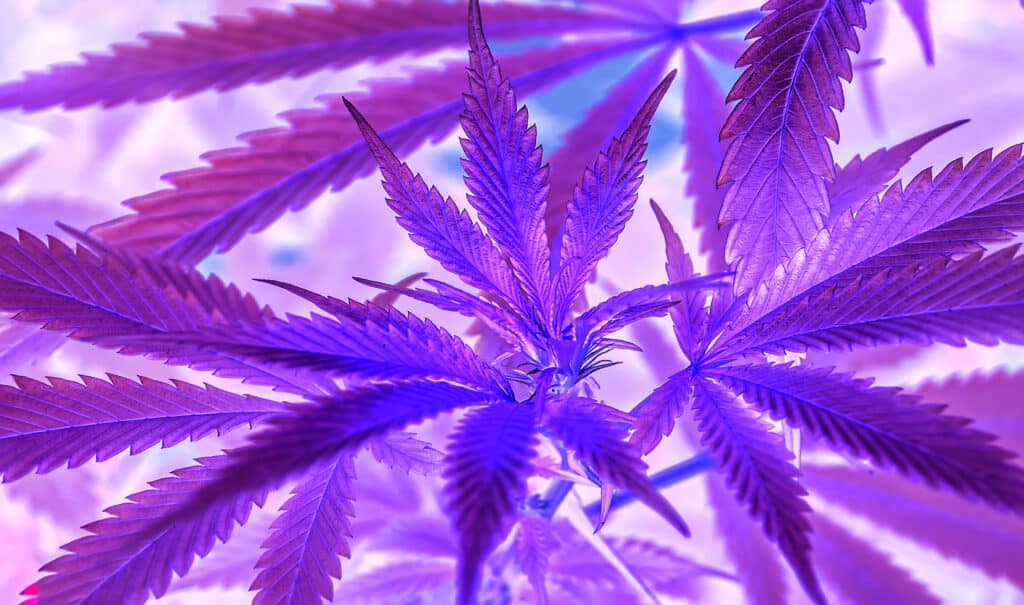Most people have heard of ultraviolet light and have a general understanding of what it is – and possibly, what it does.
But in the horticulture world, ultraviolet light can have different uses and applications and as such, is being appropriately studied and researched to expand current knowledge.
Ultraviolet light is what causes human skin to tan or even burn and it also can cause skin cancer, eye damage and more with prolonged exposure. But what effect does UV light have on plants? Can it be beneficial? Can it be harmful?
Outside of the cannabis growing industry, most professionals in the horticulture world are not experimenting with UV light but there are some intriguing studies and details emerging from cannabis growers about possible applications and uses.

Let’s first discuss the three different types of ultraviolet light: UVA, UVB and UVC. UVA light, or radiation, is barely visible to human eyes. It has the longest wavelength and the least energy. Naturally occurring UVA light from the sun is passed through the ozone layer and is the most commonly found form. In small doses, it isn’t harmful to humans.
UVB light – and UVC light – are both harmful to humans in any dose. UVB has a shorter wavelength than UVA and UVC is shorter still. Most natural UVB and UVC light is filtered by the ozone layer and for a long time, both were believed to be dangerous to plants as well.
In horticulture, plants are exposed to UVA light outdoors or in a greenhouse, just because it’s naturally occurring. For indoor growers, small amounts of UVA light are present in conventional lamps and bulbs, but some LED lights emit UVA, UVB and UVC lights but they are – for the most part – still rare and expensive.
So, how does UV light affect plant growth and development? UV light is outside of what’s known as the photosynthetically active waveband. But, since it occurs in nature, UV light does have an effect on plant growth. Some of the effects can be seen as negative (thicker/waxier leaves, and shorter stems/smaller leaves) but plants exposed to UV light can be less vulnerable to pests and fungal growth.
There are some indications that the use of UV light, in limited applications, can be beneficial for certain crops in specific growing applications – especially the use of UVA light. But the research of these applications is ongoing and nothing definitive exists as of late.

Researchers – and growers, especially cannabis cultivators – are working to tweak the formula of how much light, what kind and how to deliver it to produce the desired outcome. Determining the precise formula, or recipe, is key, as too much is definitely known to be harmful to plants.
We know that light quality can change a plant’s architecture and shape. But how? The color of the light can impact plant growth through photosynthesis or photomorphogenesis. Red light is known as the most efficient light, then blue then green. However, green light is known to penetrate more deeply into the plant’s canopy – which can be important to note in plants like cannabis with a dense canopy.
Studies have increased our understanding of how different light can affect plants. For example, we know that blue, red and far-red can make a difference. Blue light can make a plant more compact and UV and blue light promote pigmentation, and also more intensive color development can be expected – especially with higher UV light. Anthocyanins, pigments that make plants look red or purple, are particularly responsive to UV and blue light.
In addition to changes in the plant’s growth pattern, UVB and UVC light can have other applications in horticulture.
For UVB and UVC light specifically, both are known to kill microorganisms in water and on surfaces, but since they are dangerous to humans in any form, the delivery method is key. And there is research being done to determine if UVB and UVC can be used to kill harmful bacteria, fungus or pests on plants without harming the plant.
The question remains: How much ultraviolet light, and in what form, can be used to be beneficial to the horticultural world and how can it be safely delivered? The FDA and the USDA – as well as cultivators — are working on solutions.


